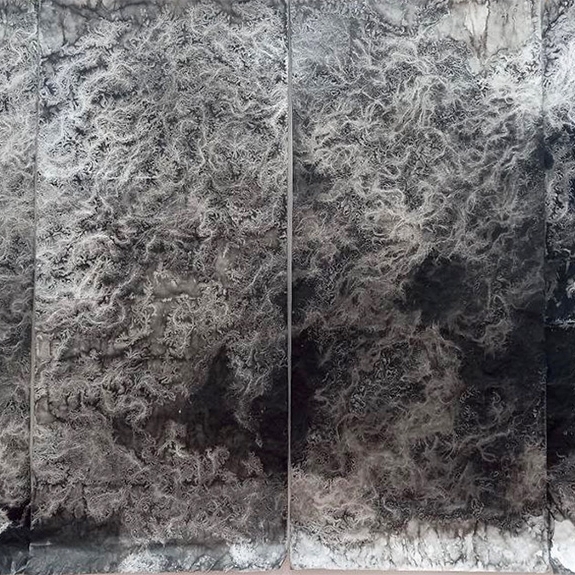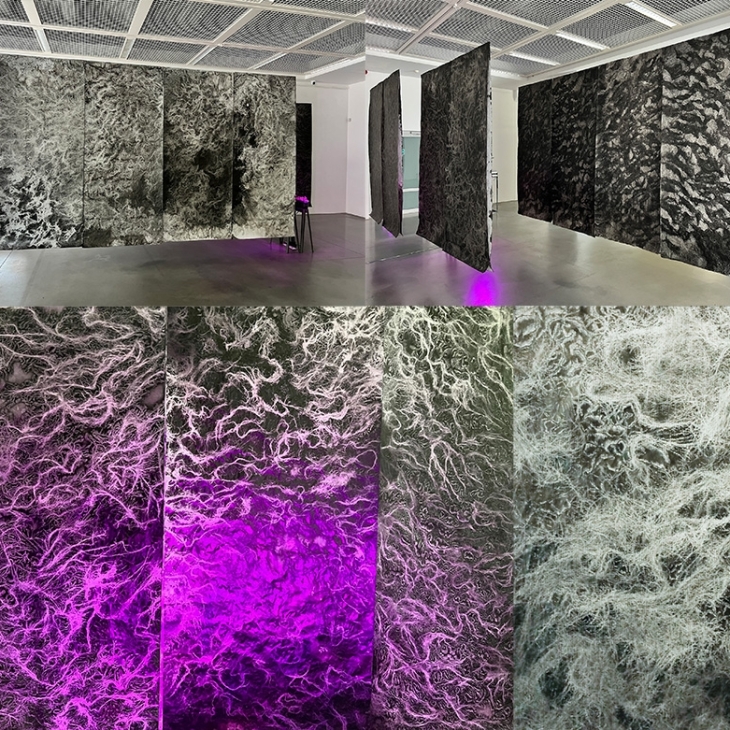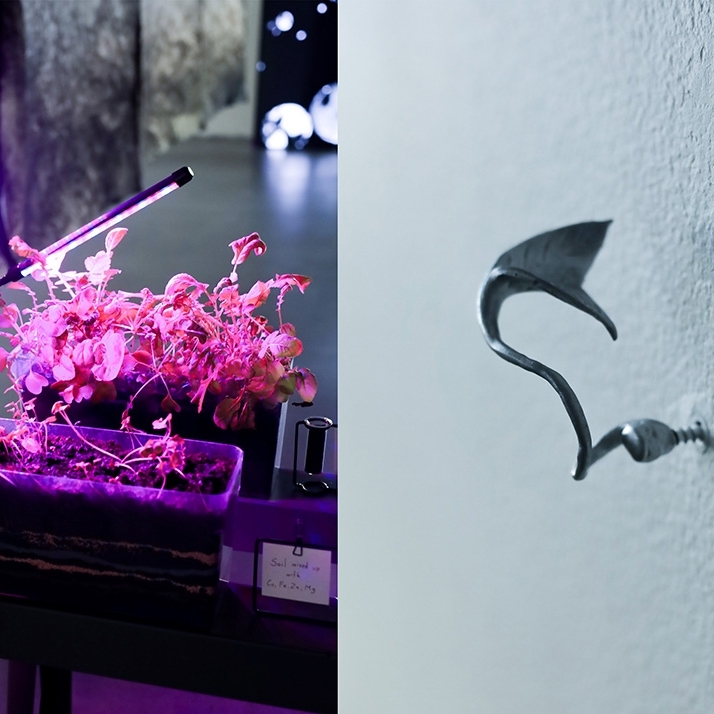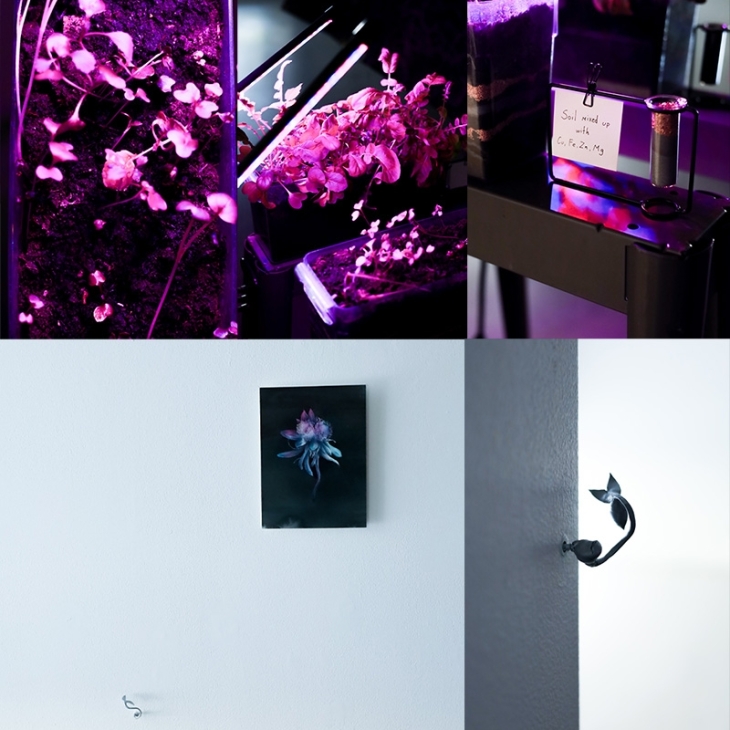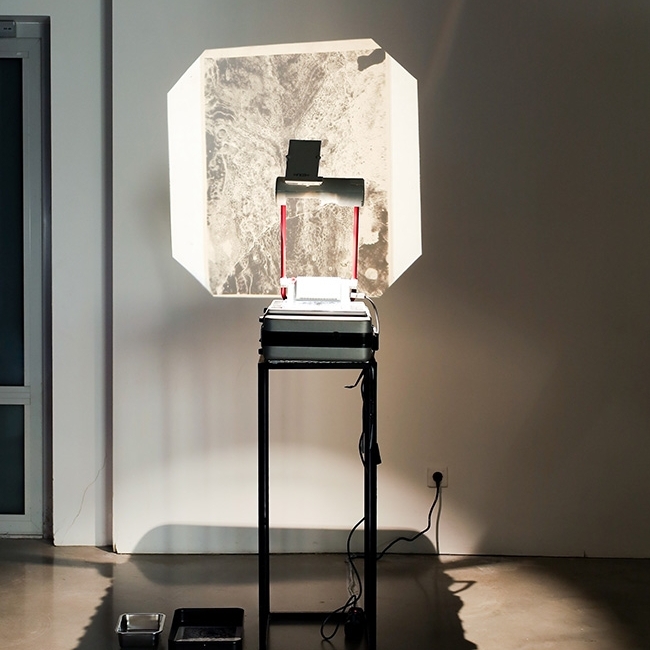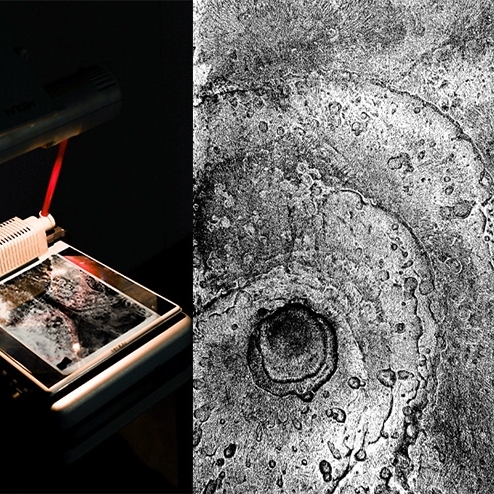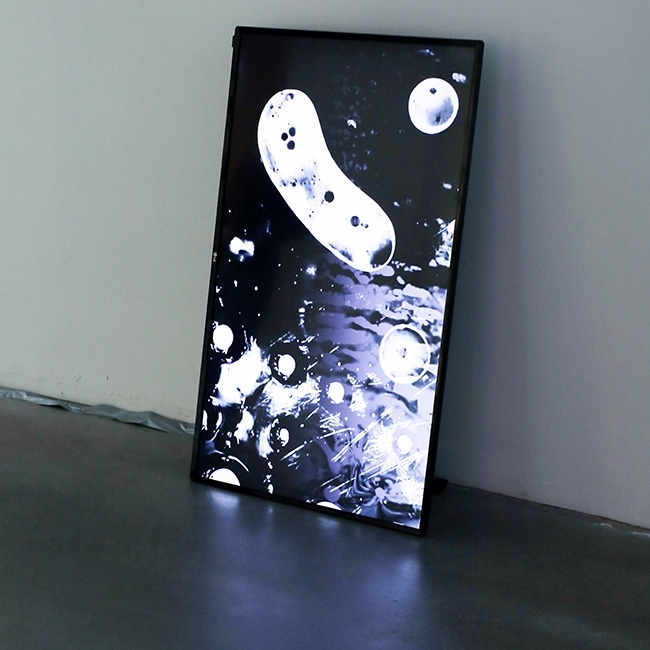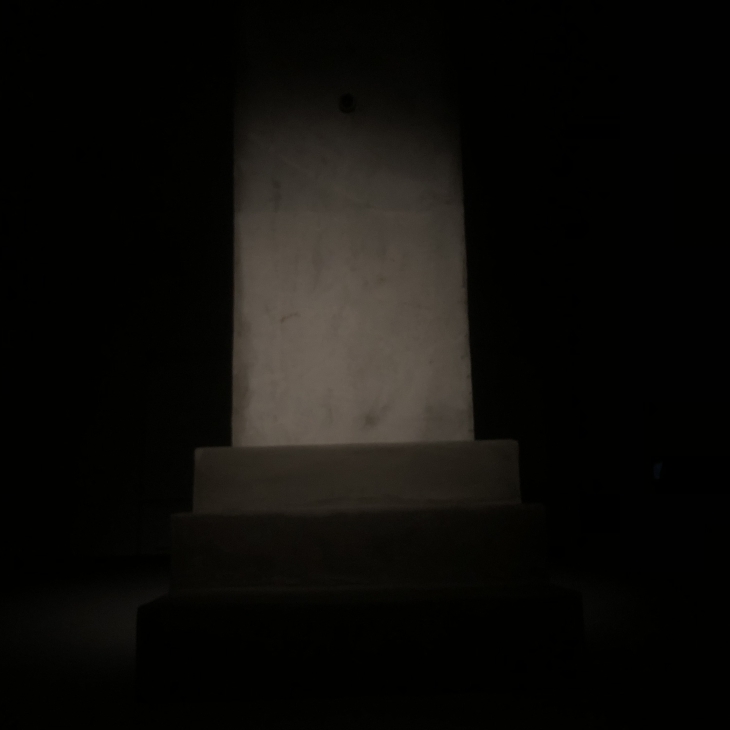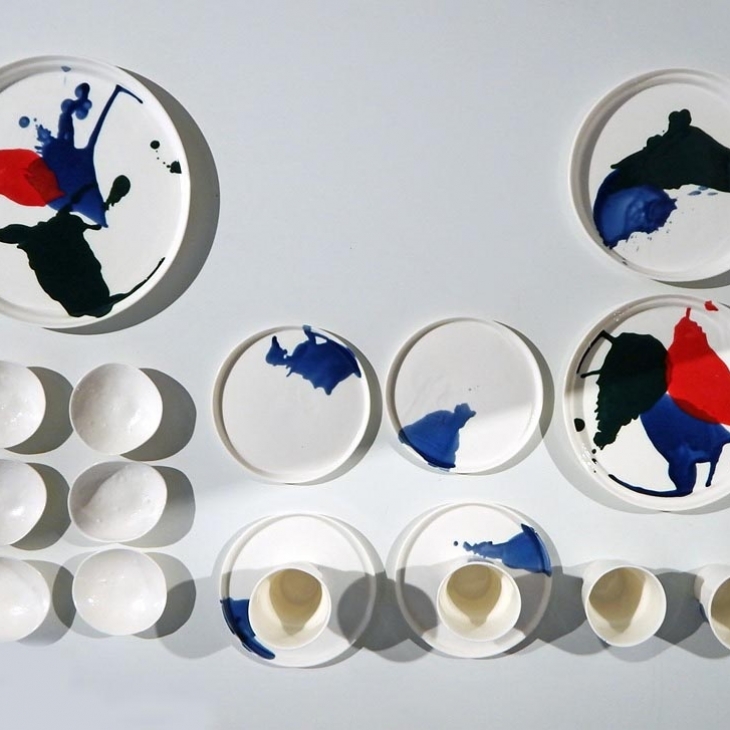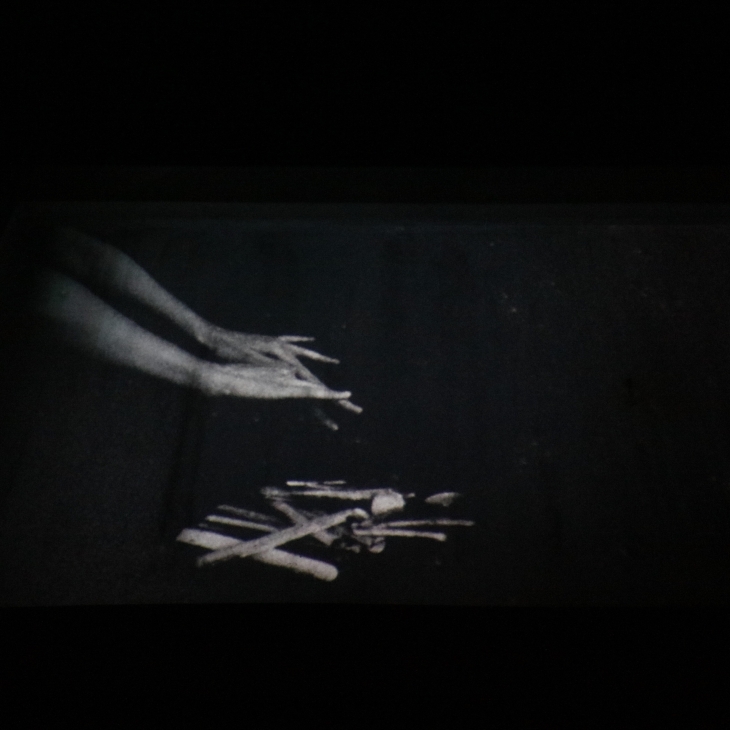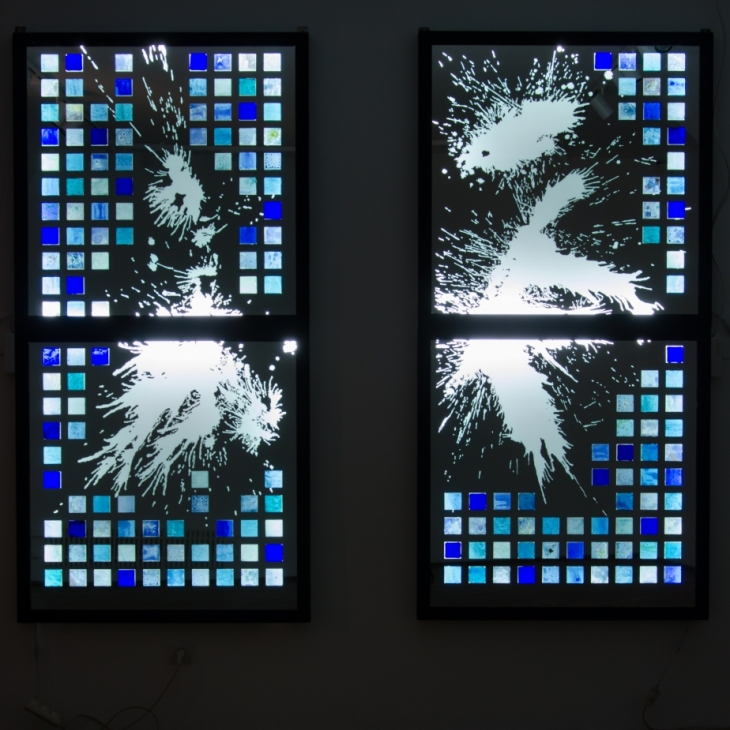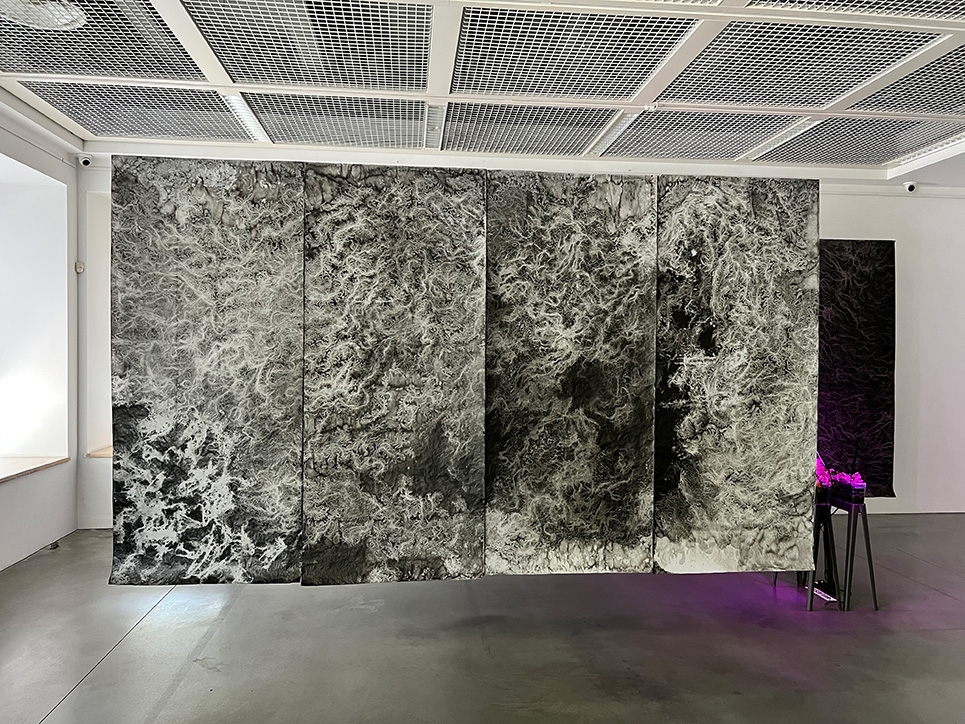Metal Sprout. Post-War regeneration, 2025
Black Ink, etching( printmaking), real plants, watercolor, video
The restoration of ecosystems on lands that have experienced war can be imagined through the metaphor of annihilation. In physics, this phenomenon describes the collision of a particle and its antiparticle, resulting in their disappearance and conversion into energy. Matter is destroyed, but it does not vanish without a trace – it changes form, transitioning into another state. A similar process can be observed in nature after large-scale destruction. War devastates the landscape, disrupts biodiversity, and strips a territory of its former ecological identity. Everything turns into a kind of “void”– not an end, but a starting point containing the potential for a new cycle. From this void, like from released energy, nature begins to rebuild: the first sprouts appear – forms of life capable of surviving in the harshest conditions. These early signs of rebirth mark the transition from destruction to restoration. Annihilation, in this reading, is not a final disappearance but a transformation. With the collapse of the old order, space opens up for a new structure – one that is sometimes even more resilient than before. It is not merely a return to life, but a rethinking and relaunch of life in a new form. Is the plant real, or already a copy? It may have been the original, but it has changed on a cellular level – now it carries a part of the “other.” Or perhaps it is no longer the same plant at all – the original perished, and a double has taken its place, giving rise to a different form of life born out of violence. This is not evil. It is an incomprehensible force before which humanity loses control. Metal Sprout is a speculative project and art laboratory that explores the inner tension between destruction and regeneration in nature. This duality highlights both the vulnerability and the strength of nature in the face of human violence. Here, disappearance and “destruction” are not the end, but a transformation – a clash of opposites leading to a new state of being. Will a sprout break through where there is only void and ash? The metallic sprout, as a new reform of life, opens up discussions about the changing relationship with nature and the world, and how they are redefined when we prioritize military advancement over nature, recklessly consuming the resources of surrounding ecosystems. The project is built on the idea that violence becomes a catalyst for new life, embedding itself into the very DNA of existence. What is this brave new world, and will there be a place for humanity in it? Based on scientific and medical literature, and studies on the ecological consequences of nuclear testing and military action, I use various artistic media – painting, sculpture, graphics, and video documentation – and, as an artist-scientist, I have conducted experiments to illuminate and investigate what lies hidden in the shadow of war, deep within the earth itself. Vision makes us aware.
Experiment 4. The Birth of the new life Plants have the power to be reborn in completely empty and destroyed zones. Plants adapt for new realities and new habitats. They create new ecosystems and change their inner code systems. Natural regeneration occurs. Through my Ink art works I recreate the process of the birth of the new life under toxic substances. You can see complex invisible new ecosystems. Line of life. New thin roots as mycelium consisting of thin branched threads. Nature creates new life by weaving it thread by thread. I hung the works from the ceiling and gave them air in the space. It’s like a labyrinth where you become part of this system passing between complex system of line of life. Some plants, especially those known as pioneer species, are resilient and can quickly colonize disturbed land. These plants help to stabilize the soil and create conditions for other, more complex plant communities to develop.
Real plants, sculptures
1. I this part of work I show the stages of regeneration and mutation of flowers, but already under the influence of toxic reality. The flower grows from the soil saturated with metals and chemicals. The flower itself has become part of this new ecosystem and has absorbed all consequences of the war. The plants grow, but with a different internal code and external mutations. I created small flower sculptures imitating metal. I show the growth of the flower in dynamics. The metal flower shows that its entire inner system has become saturated with metals, and it has become part of this new toxic ecosystem. The consequences of soil pollution after war affected its internal structure and appearance. In my work, I show these changes in dynamics from the first sprout to a new mutated flower. Plants will always find their way to life, but the way can change them beyond recognition. Metal flower as an image of Violent regeneration. 2. In experiment with a real plants I planted one portion of the seeds in clean soil, and another portion in soil mixed with dust and particles of various metals, along with several chemical additives. In a way, I simulated a polluted environment to observe how foreign contaminants affect living organisms. I was interested in observing and recording the dynamics of their growth. For this experiment, I also used phytolamps to provide artificial light. The experiment yielded the following results: microgreen seeds planted in clean soil sprouted within about 1–2 weeks, grew fairly quickly, and began developing leaves. In contrast, the seeds planted in metal-contaminated soil showed their first signs of life only after about a month’s delay. Only one seed attempted to sprout; the rest never produced any shoots. However, this single struggling sprout was unable to rise fully, despite being given the same watering and growth conditions as the plants in clean soil.


